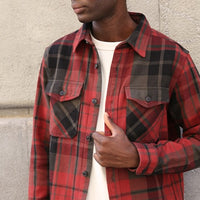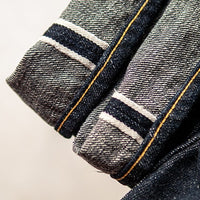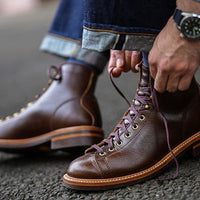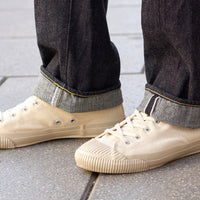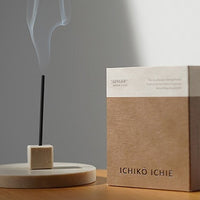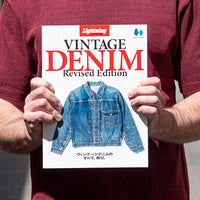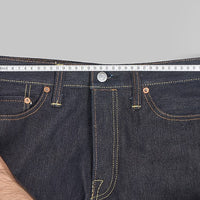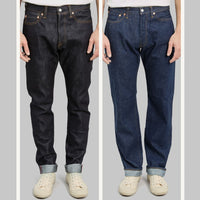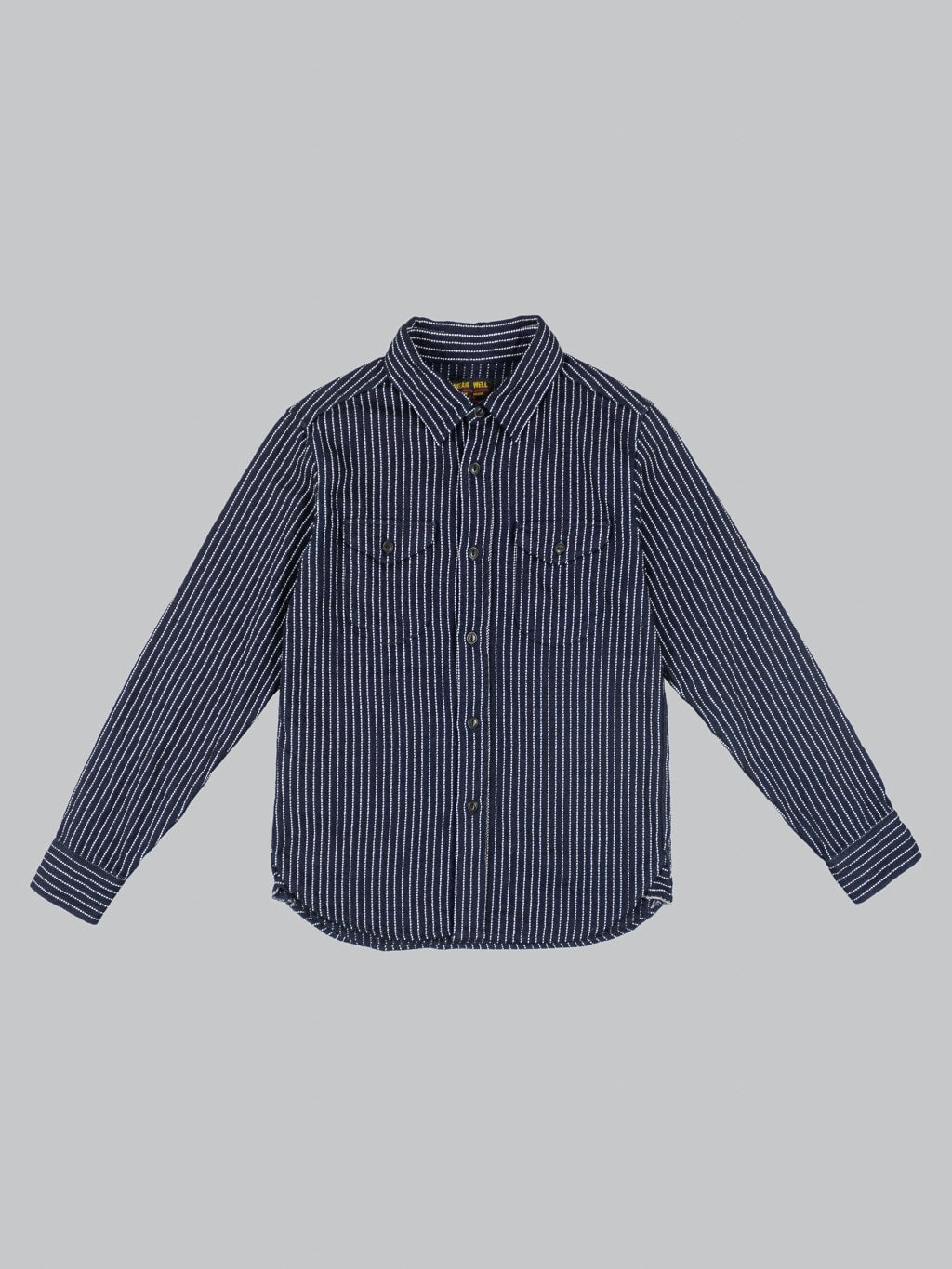
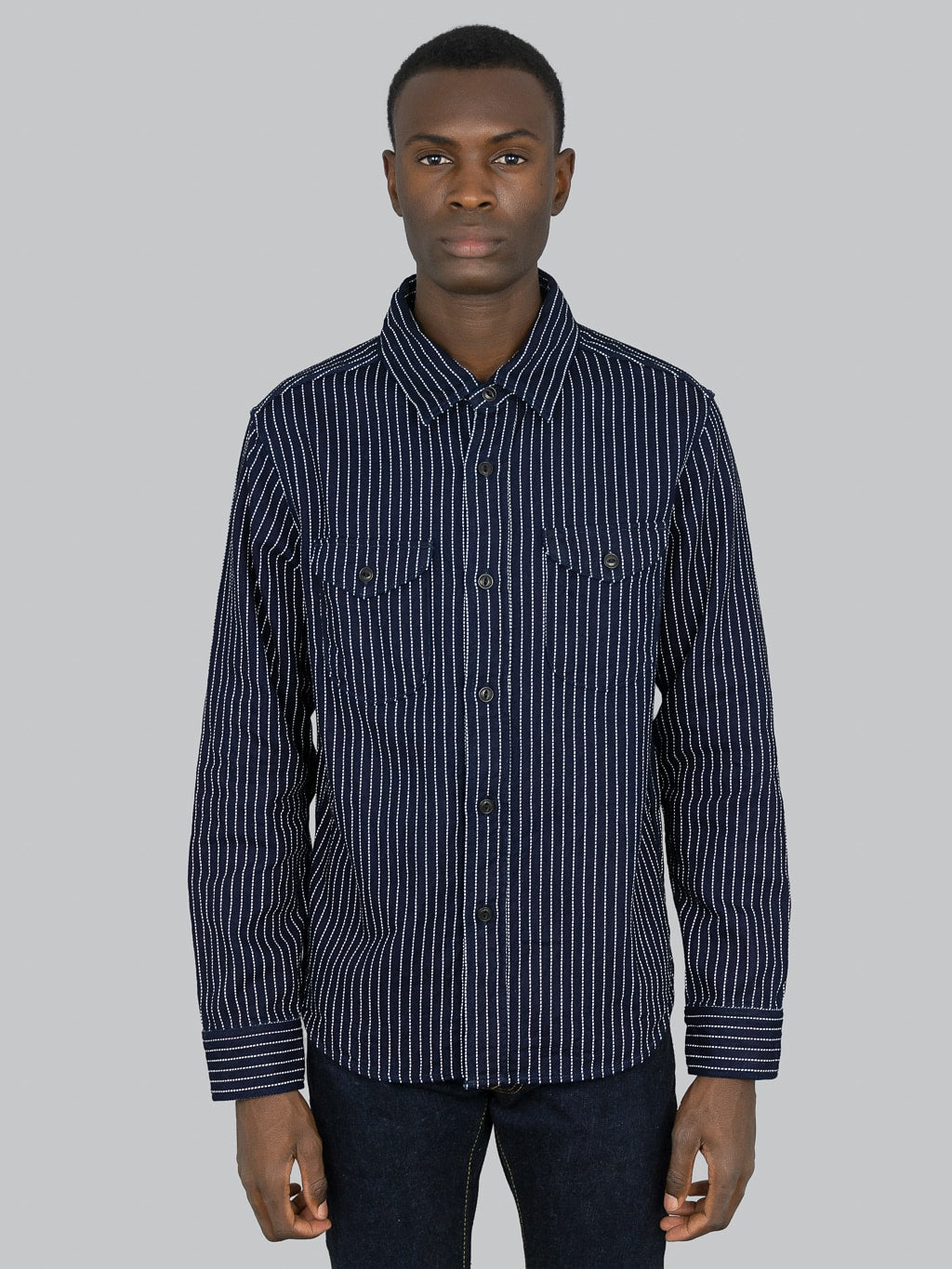
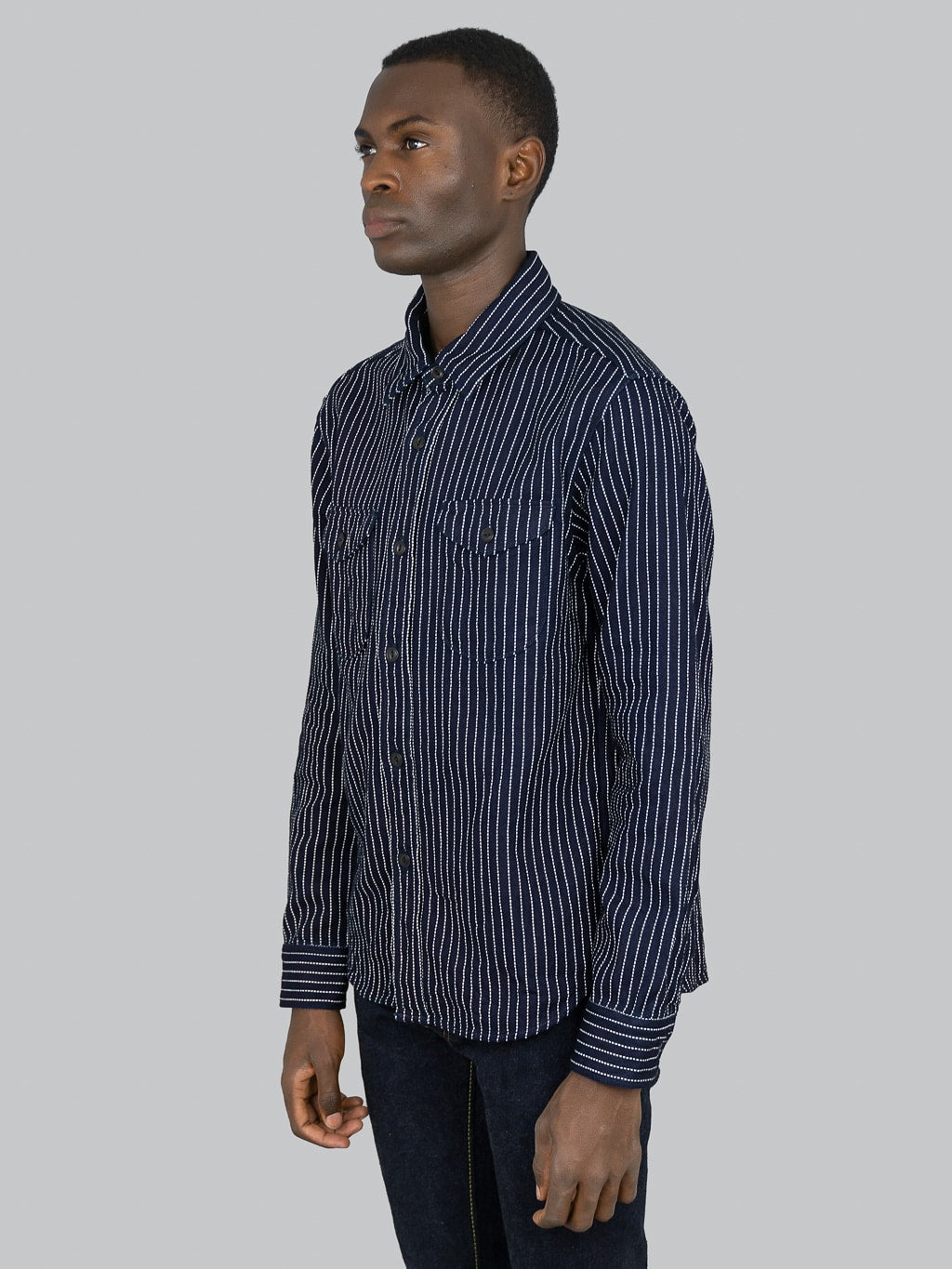
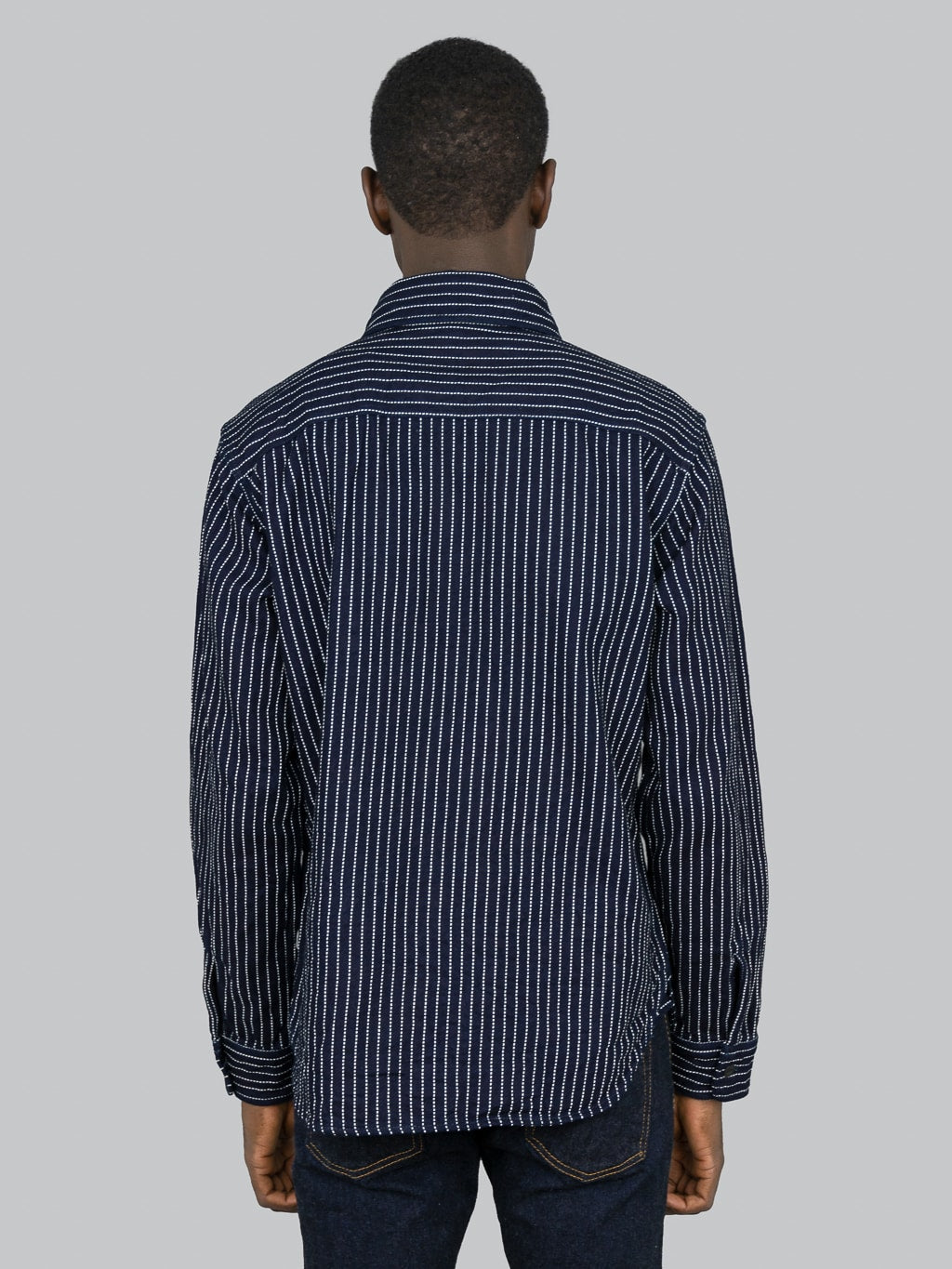
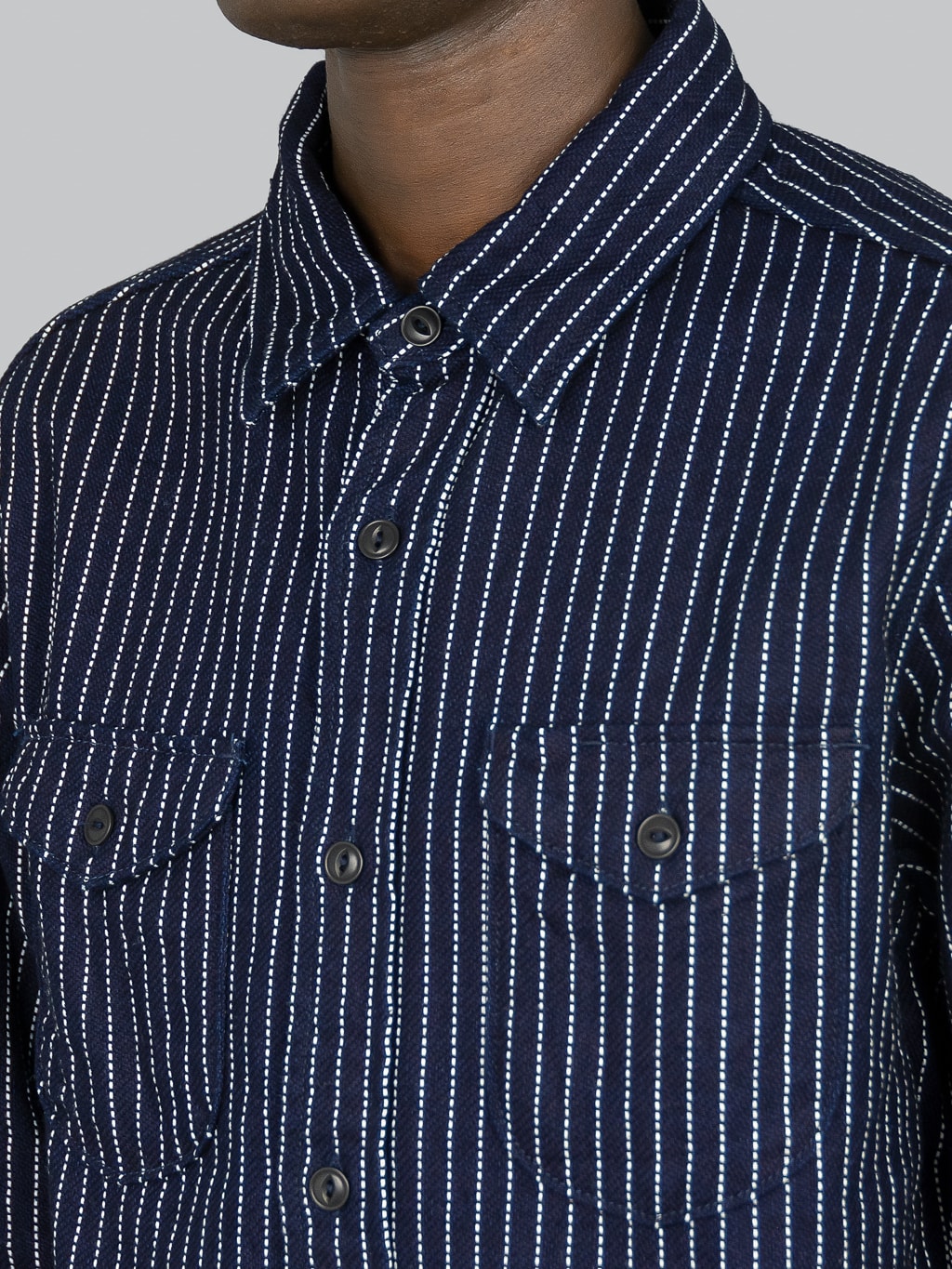
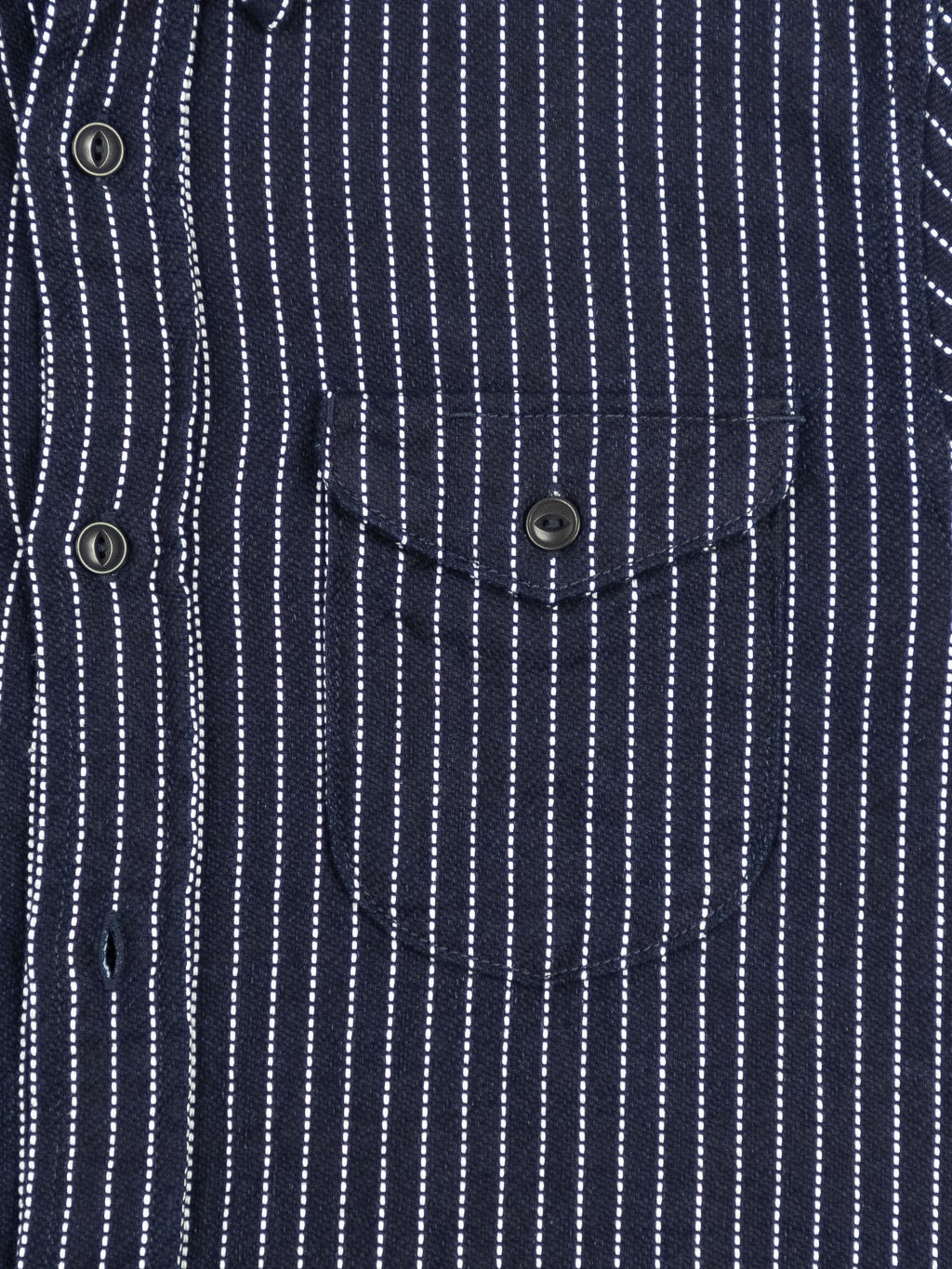
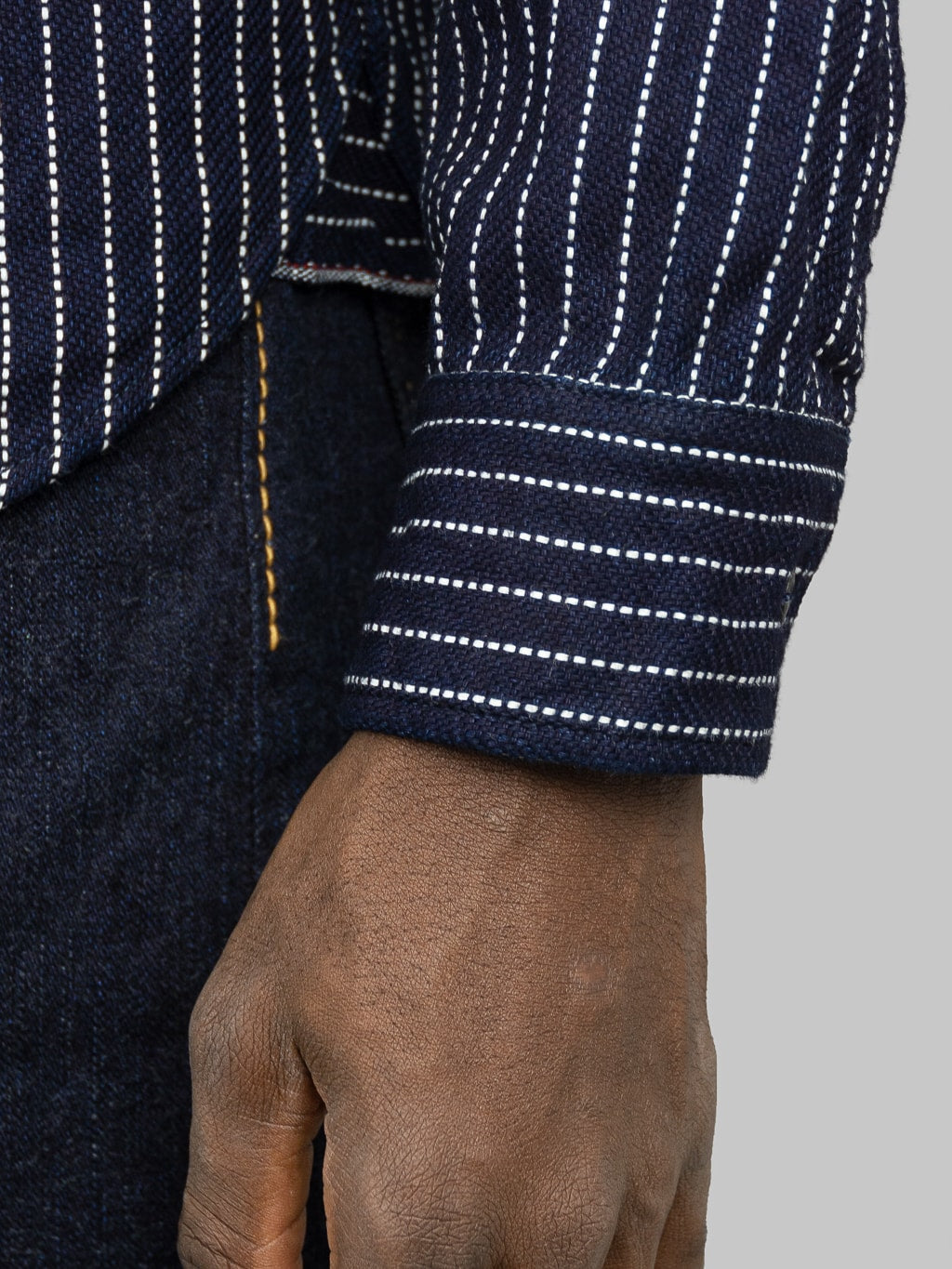
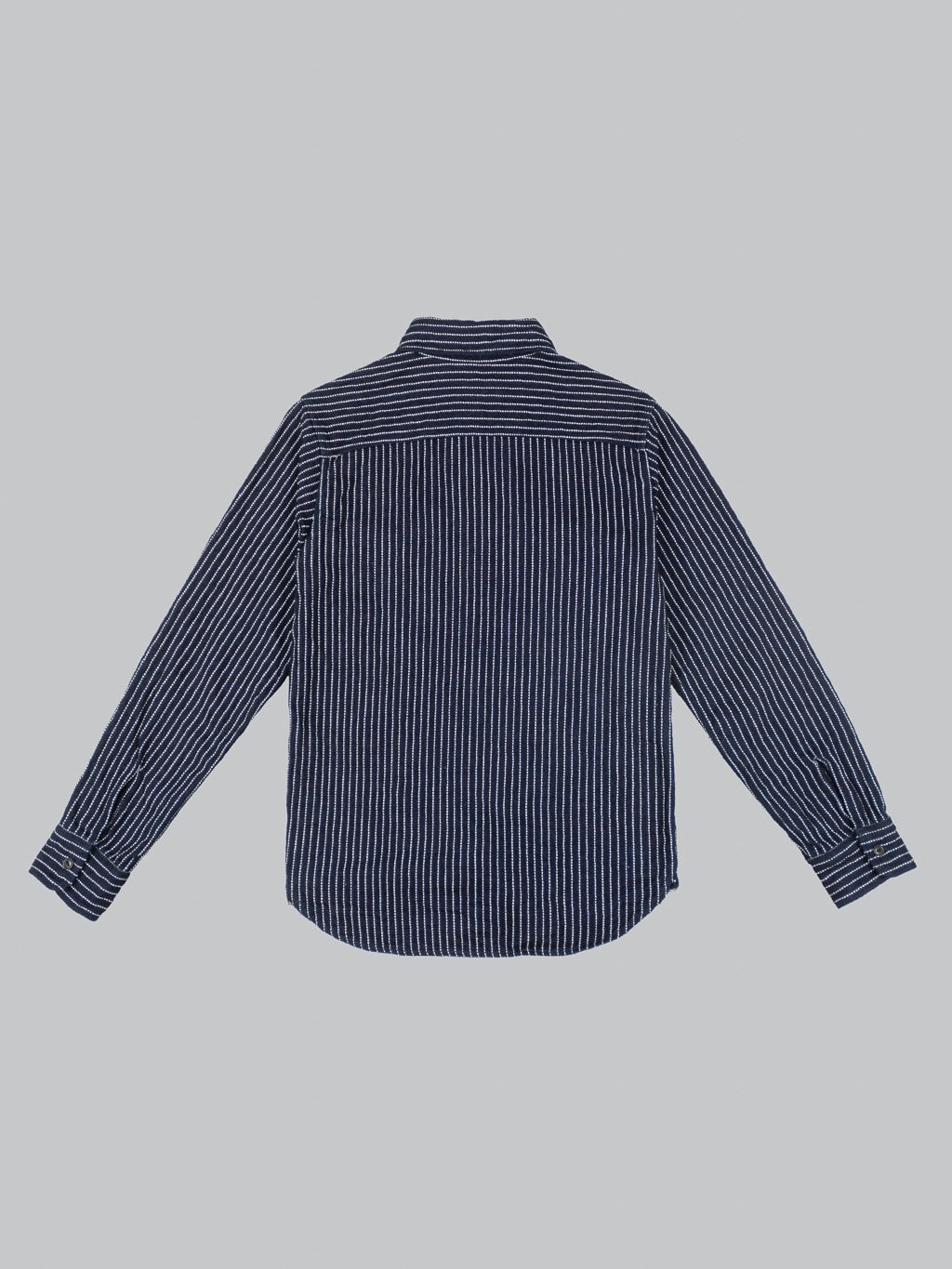
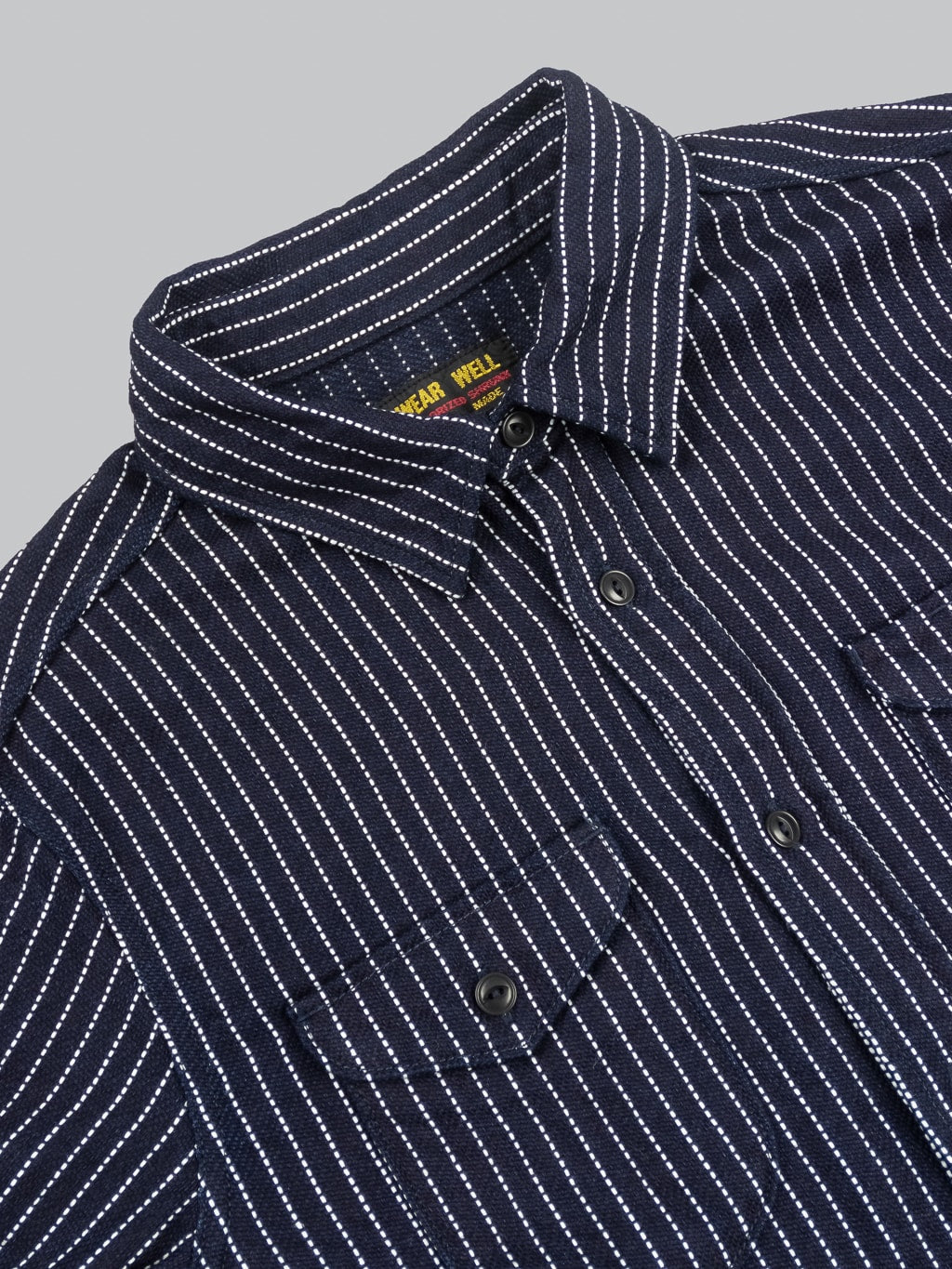
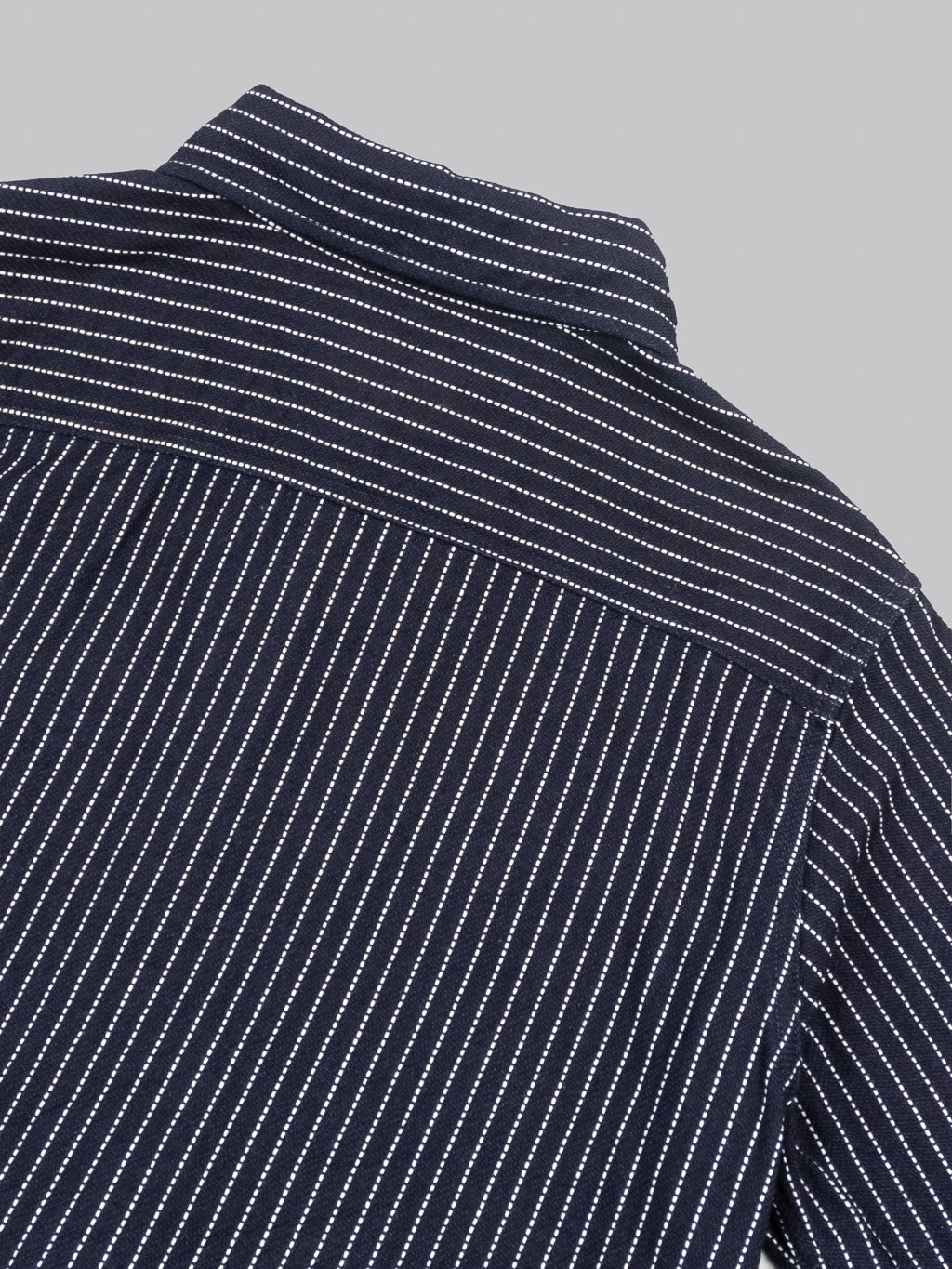
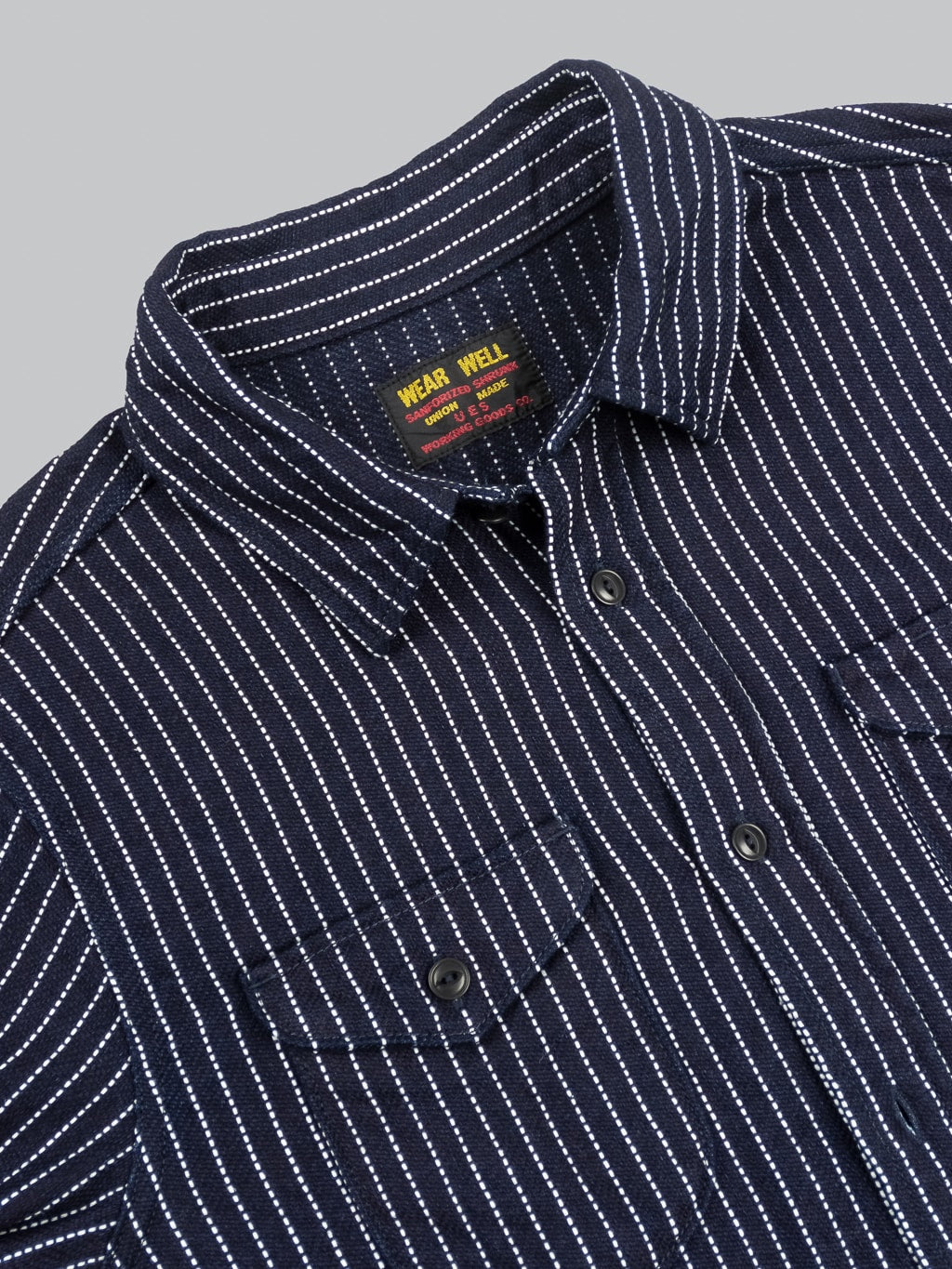
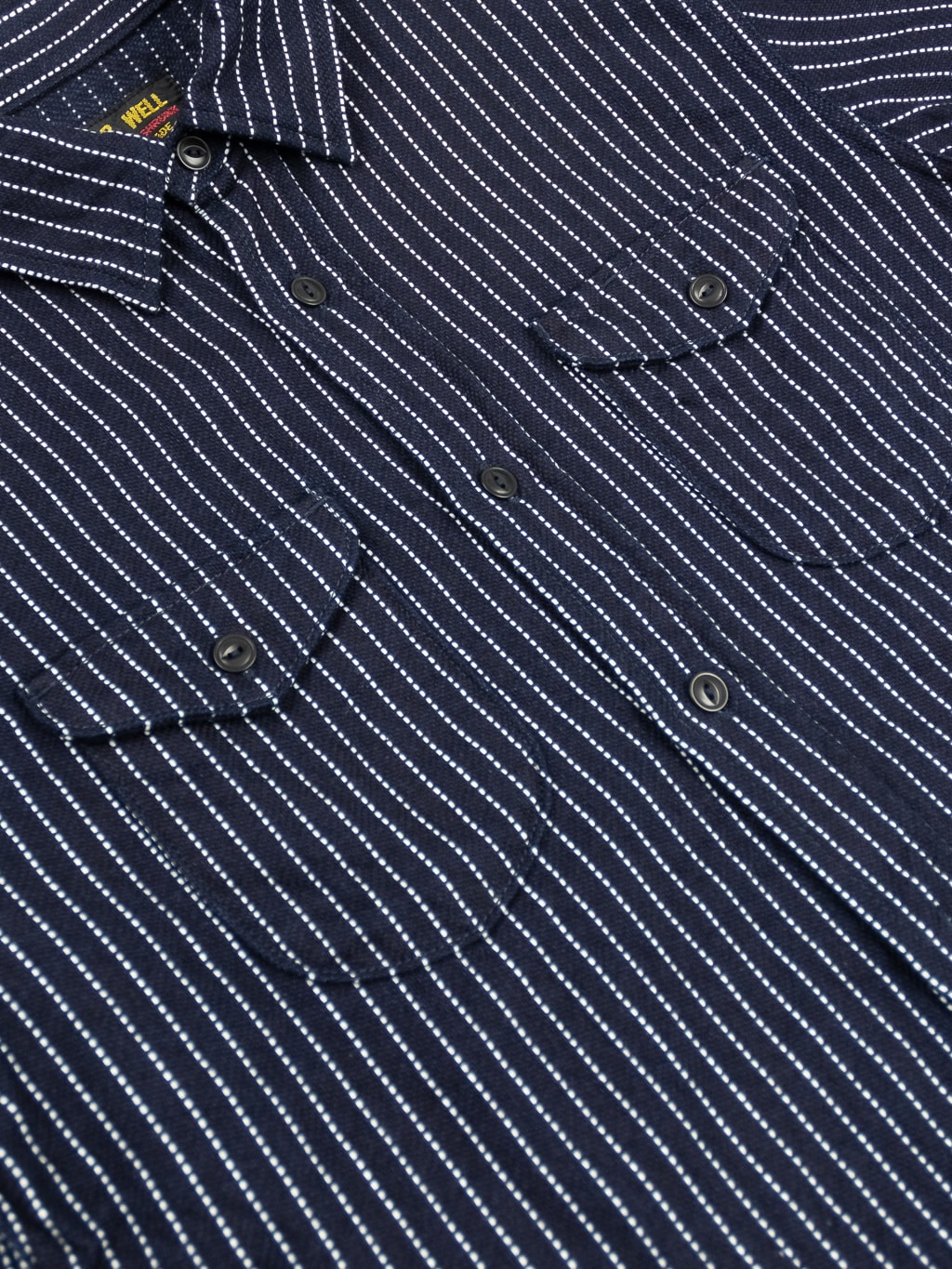
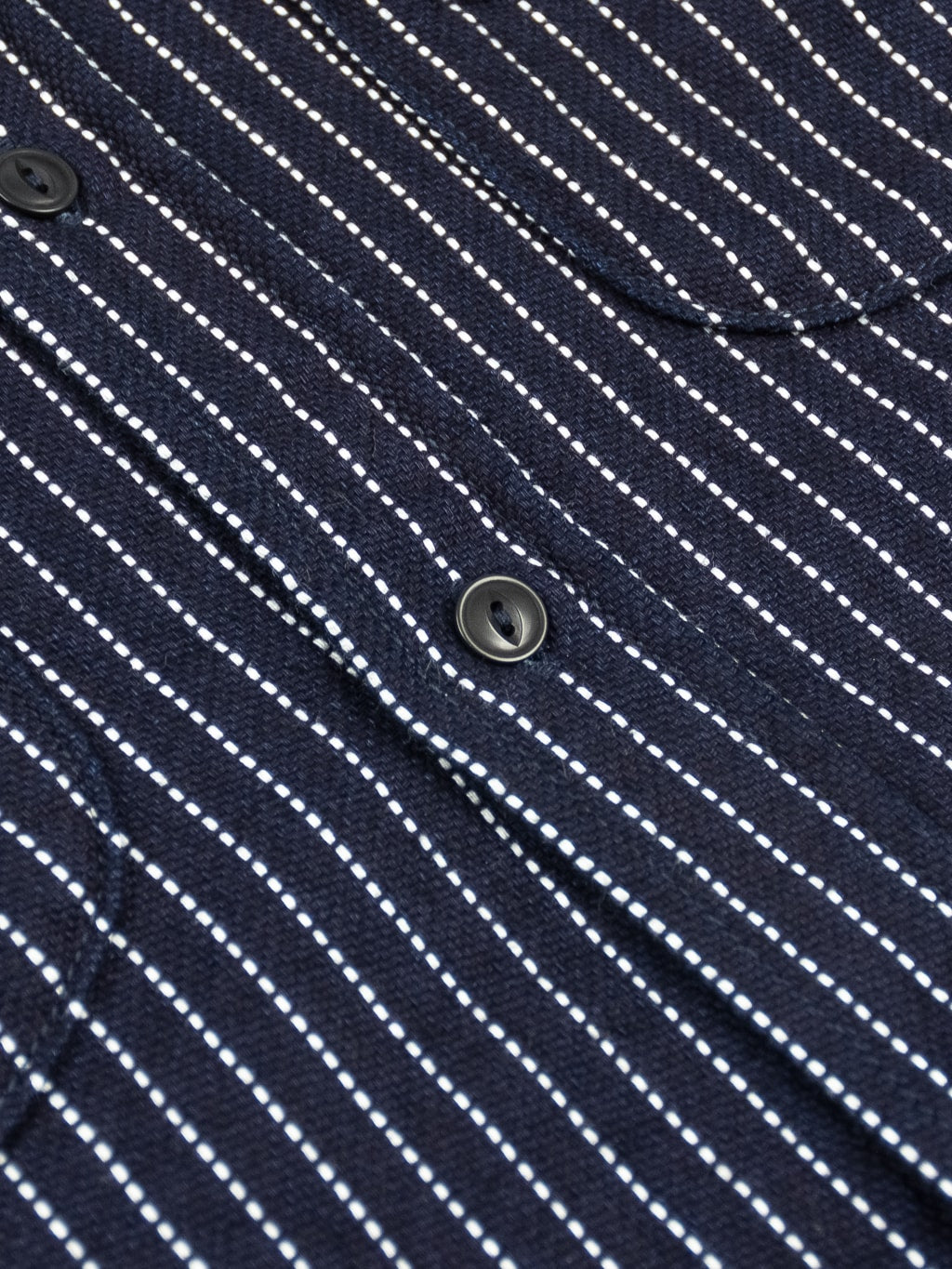

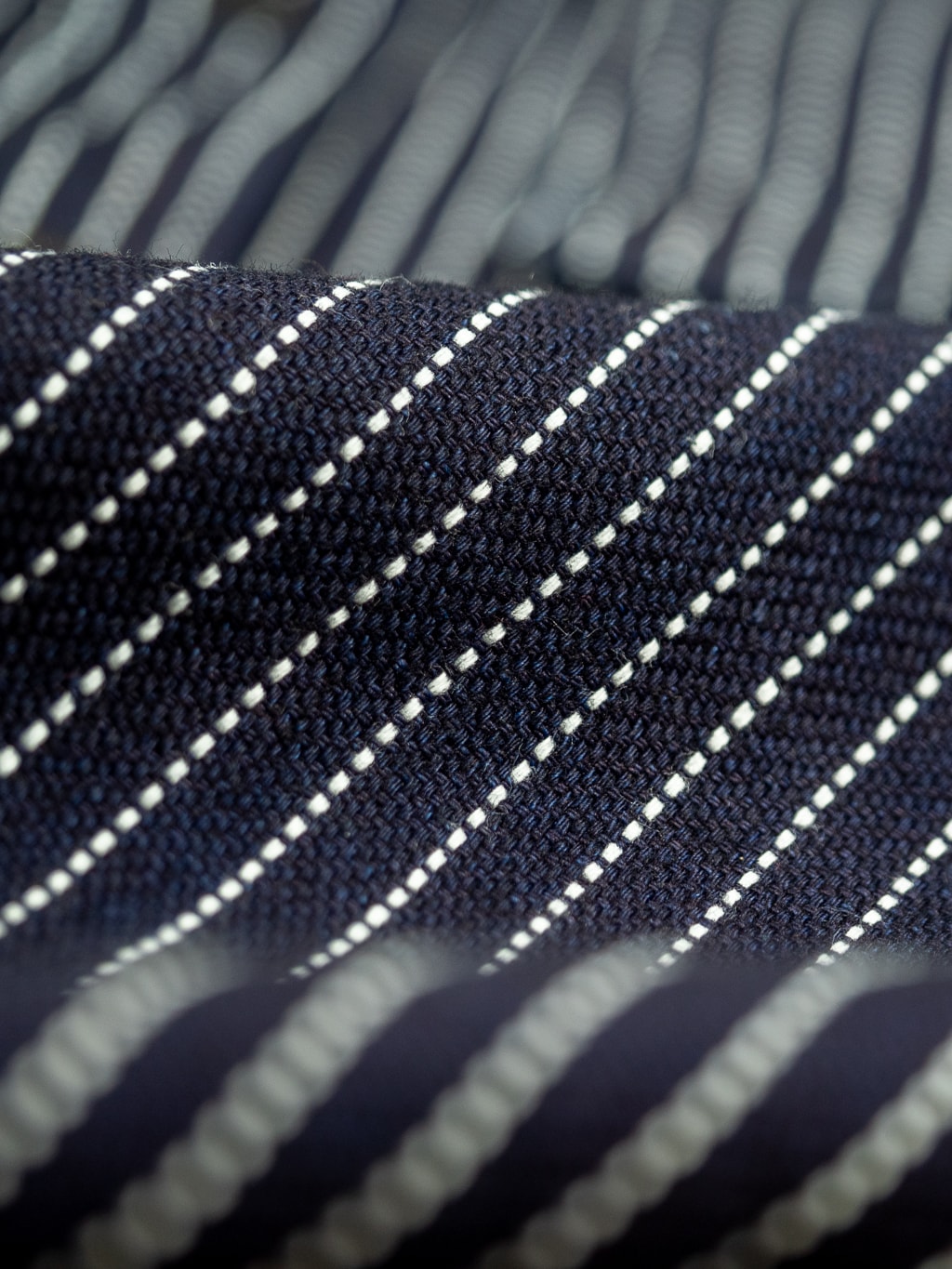
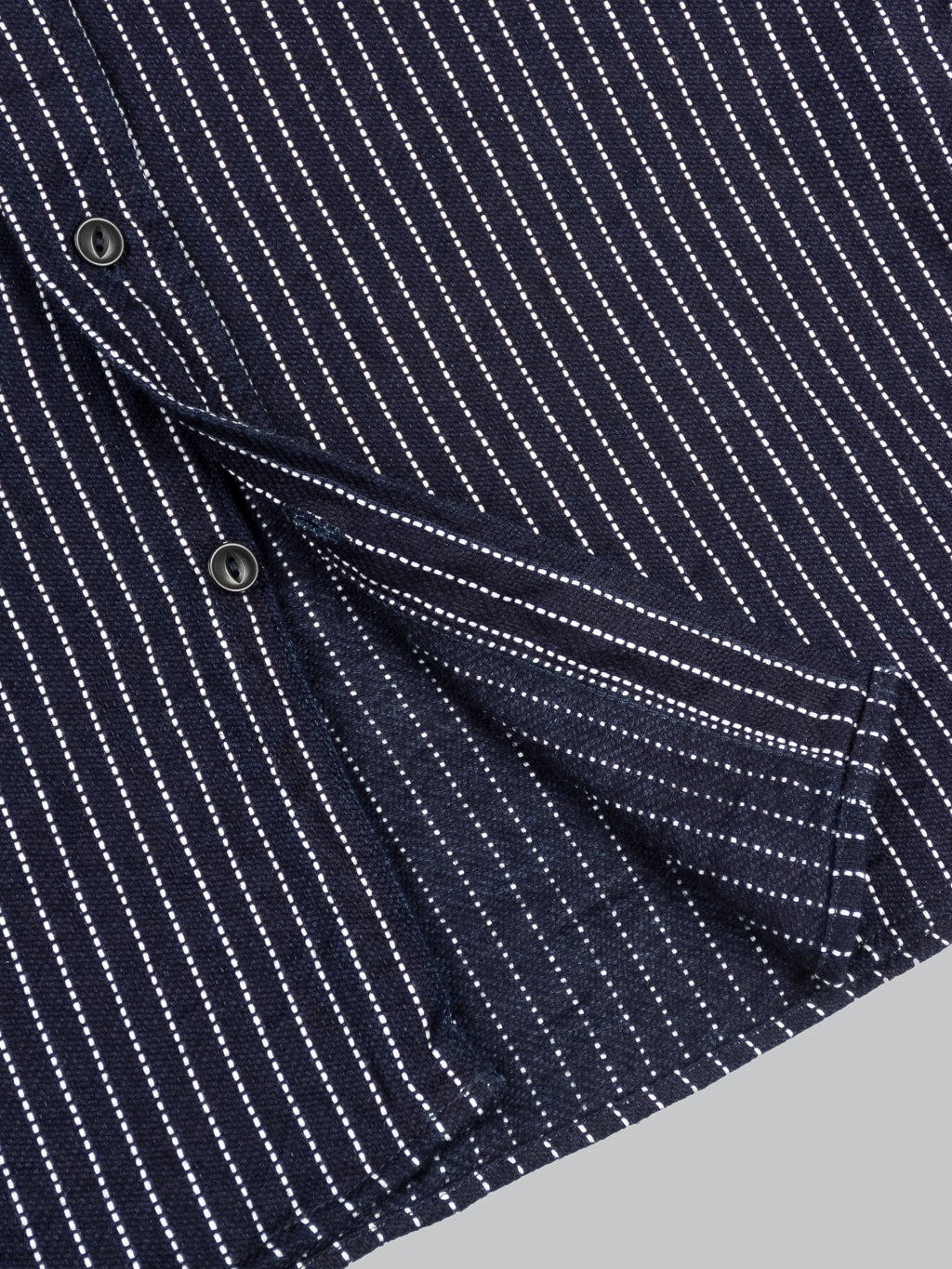
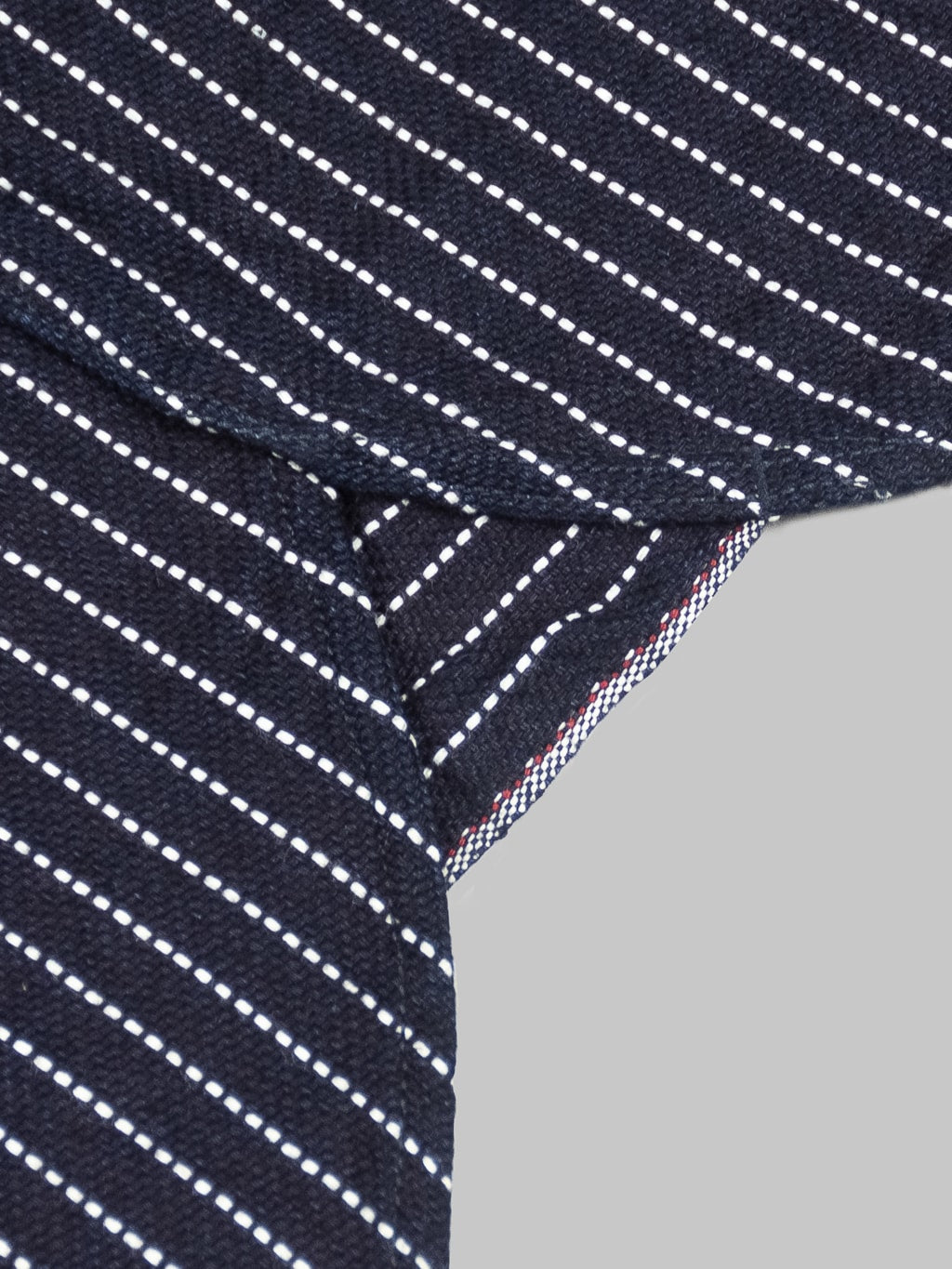
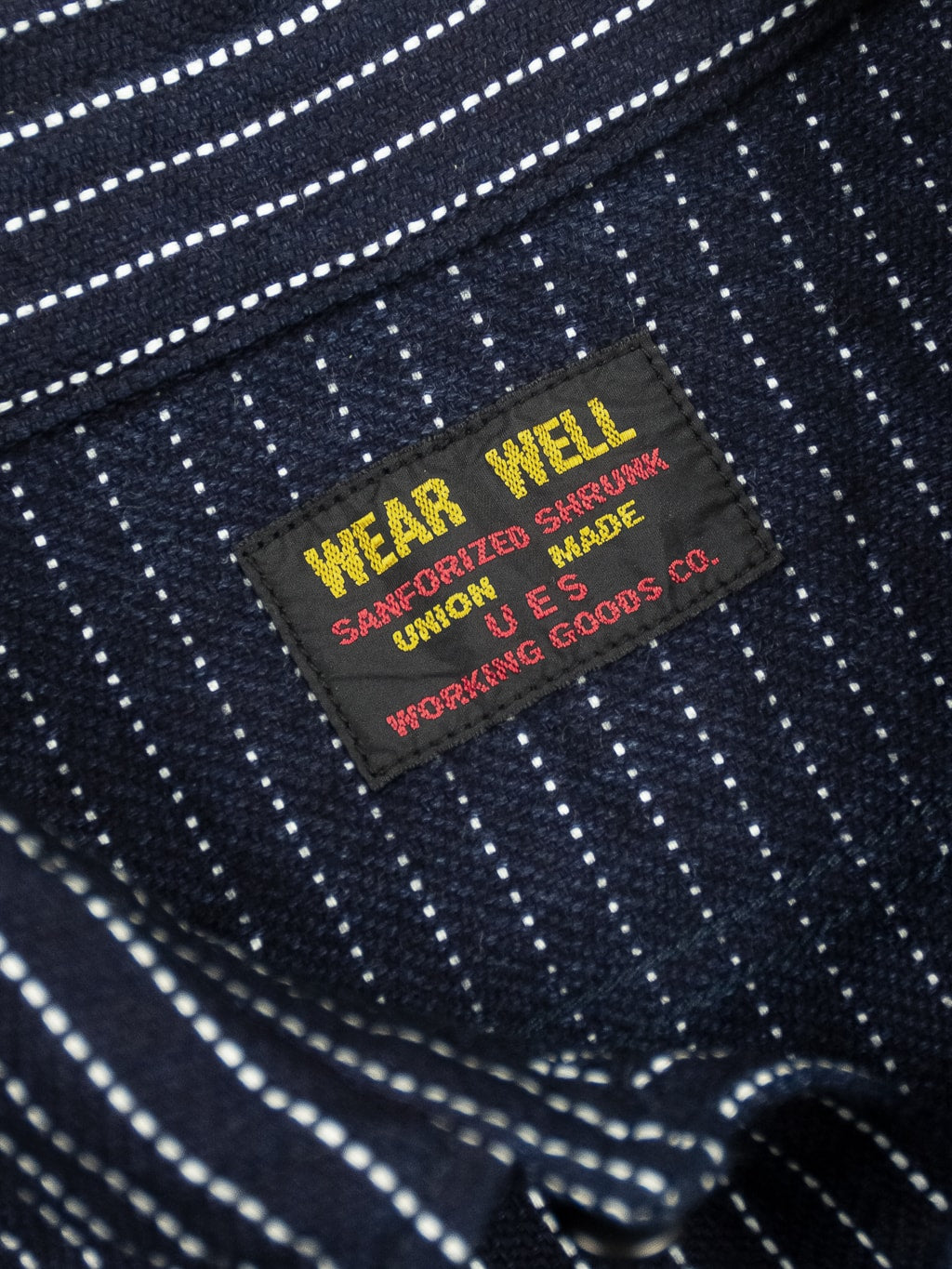
UES Indigo Stripe Heavy Flannel Shirt
The UES Flannel Indigo Stripe is crafted in Japan from ultra-dense 14.5oz indigo rope-dyed yarns for a uniquely fading character over time. Fine white threads create a subtle dotted stripe pattern across the rich indigo base. Woven on vintage looms, it offers exceptional texture, comfort, and long-lasting durability.
| SIZE | 2 (M) | 3 (L) | 4 (XL) | 5 (XXL) |
| Chest | 102 | 105 | 114 | 124 |
| Shoulders | 43 | 43.5 | 46 | 49 |
| Waist | 51 | 52 | 56 | 59 |
| Opening | 52 | 53 | 57 | 60.5 |
| Lenght | 70 | 72 | 74.5 | 76 |
| Sleeve | 62.5 | 64.5 | 65 | 66 |
Crafted in Japan from an ultra-dense 14.5oz fabric, the UES Heavy Flannel Shirt stands among the heaviest flannels available worldwide. Woven on vintage shuttle looms in Okayama, the shirt features a rugged, textured exterior and a softly brushed interior for superior warmth and comfort. What sets this version apart is its unique color. Both the warp and weft are made from indigo rope-dyed yarns, allowing the shirt to develop beautiful, personalized fading over time—a hallmark of true indigo garments. At evenly spaced intervals, fine white threads are passed through the warp, creating a subtle yet striking dotted stripe pattern that adds visual depth without overwhelming the classic silhouette.
Every detail of this flannel reflects master craftsmanship. From the spinning and reactive dyeing of the yarns to the weaving, cutting, and sewing—each step is meticulously executed in Japan. The result is a shirt built to last, with rolled seams and double chain-stitching ensuring long-term durability. The check pattern, made with thick warp and weft threads, delivers a striking contrast of bold and subtle tones, anchored by white lines for depth and character.
The fabric offers just the right amount of movement and drape despite its weight, making it surprisingly comfortable to wear. Thoughtful touches like acorn-shaped chest pockets and natural ivory palm nut buttons add refinement to this rugged essential.
Fit Notes: UES flannel shirts tend to run small compared to American sizing. Due to their Japanese sizing and slim fit, we typically recommend sizing up. For example, if you usually wear a Medium in American brands, a size 3 (Large) in this shirt should provide a good fit. However, we always recommend checking our size chart to ensure the best fit for you.
Visit our LOOKBOOK and discover a great selection of heritage street-style outfits
Details
Shipping
Spain
FREE SHIPPING on orders over 100 EUR .
6 EUR shipping cost on orders under the value mentioned above.
European Union & The UK
FREE SHIPPING on orders over 150 EUR \\.
14 EUR shipping cost on orders under the value mentioned above.
Rest of the World
FREE SHIPPING on orders over 250 EUR .
25 EUR shipping cost on orders under the value mentioned above.
Returns
If for some reason you are not happy with your purchase you can return it to us within 14 days for a size exchange or refund.
For more info please visit our returns & exchange page.
Please note that items in the SALE category are considered FINAL SALE, with no returns or exchanges accepted.
Reviews

| SIZE | 2 (M) | 3 (L) | 4 (XL) | 5 (XXL) |
| Chest | 102 | 105 | 114 | 124 |
| Shoulders | 43 | 43.5 | 46 | 49 |
| Waist | 51 | 52 | 56 | 59 |
| Opening | 52 | 53 | 57 | 60.5 |
| Lenght | 70 | 72 | 74.5 | 76 |
| Sleeve | 62.5 | 64.5 | 65 | 66 |

